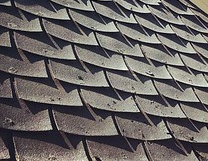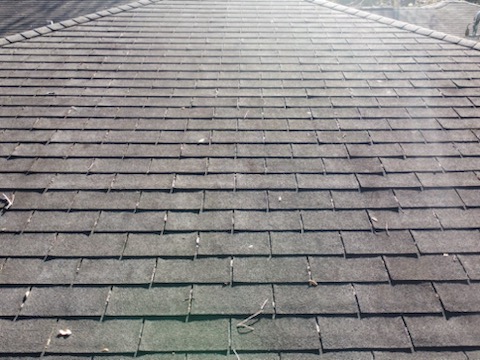
If you’ve ever had a child throw a ball on your house, or grabbed the ladder to clean your gutters, then chances are, you’ve taken a glance at an often forgotten but critically essential part of your home—the roof. While you were up there, did you think about the shingles that might be raised up a bit or curling, did you see any greenery growing from it, did it appear discolored, or unordinary? If you answered yes, you might be due for a new roof, but how can you tell? Listed below are a few signs that it’s probably time to call a roofer:
-
Is the roof old?
You can get a good idea of whether or not it may be close to time to replace your roof by determining when it was installed. If you didn’t build or purchase your home brand new, then you may need to either contact the previous owners who may know when the roof was put on or replaced, or conduct some research to find the building permit, as roof replacements typically require these.
-
The roofing materials have reached their maximum lifespan
If you know how old your roof is, the next step is to know the life expectancy of the actual covering materials. Remember, the longevity of roofing materials greatly depends on the environment where you live (it’s exposure to the elements) as well as the pitch of the roof (low-pitch roofs are exposed to more sunlight & tend to wear our faster than higher ones), the heat build-up in the attic areas, and the color of the roof (a general rule of thumb is that a darker colored roof will tend to wear out quicker than a light-colored roof.)
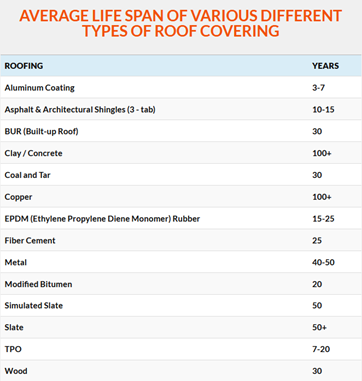
-
It’s starting to crack or crease
Commonly referred to as craze cracks, cracks appear when the mat of a shingle dries out and shrinks, resulting in surface cracking of the shingle. This is a normal sign of wear & tear, so the shingle may not necessarily need to be replaced unless it’s cracked through to the mat. When a shingle creases it is most likely due to wind but should be assessed by a professional to determine if it can be repaired. Additionally, if there are multiple (more than one or two) cracks in your tile roof it’s a sure sign that they are coming to the end of their lifecycle.
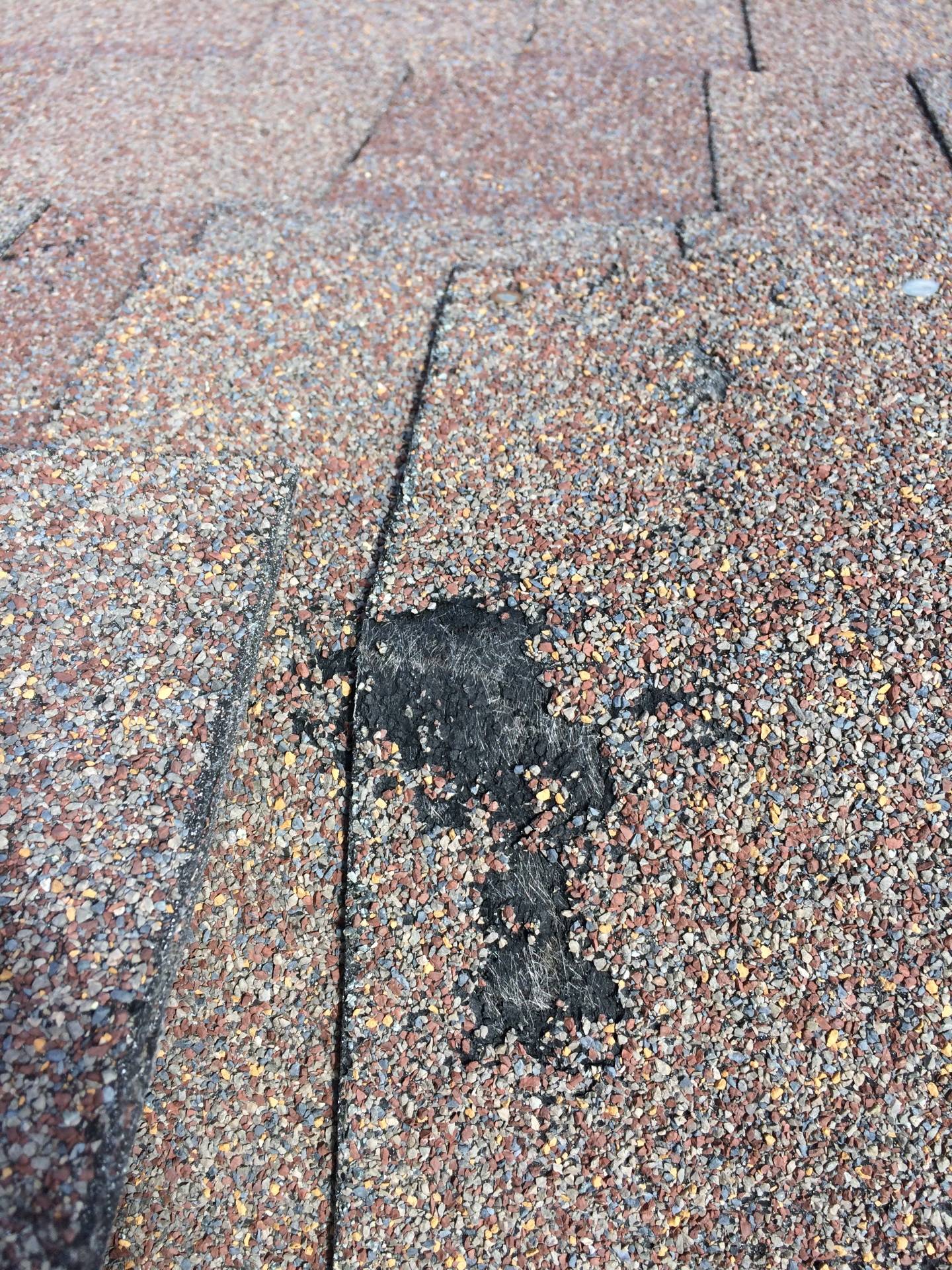
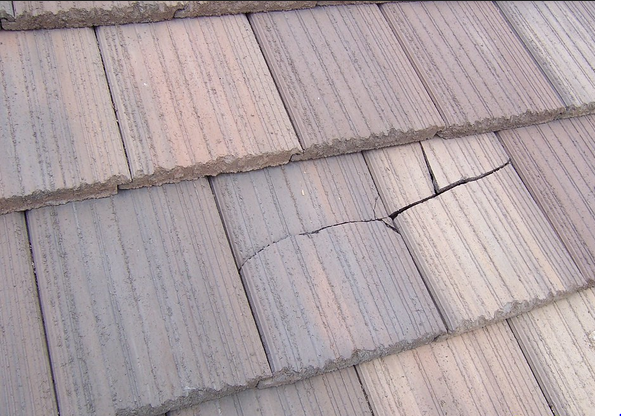
Above images of both cracked shingle and tile roofs
-
Something’s growing on it
If you notice any moss, mold, or any other living thing growing on your roof, clean it off as soon and gently as possible, as anything growing on your roof can damage it. It can be tempting to use a pressure washer to blast away the growth but don’t, as pressure washers can cause even more damage to the shingles and dislodge granules* (*roof granules are a sand-like material applied to or embedded into the shingle’s surface and are designed to protect the shingle from accelerated weathering (See image below)
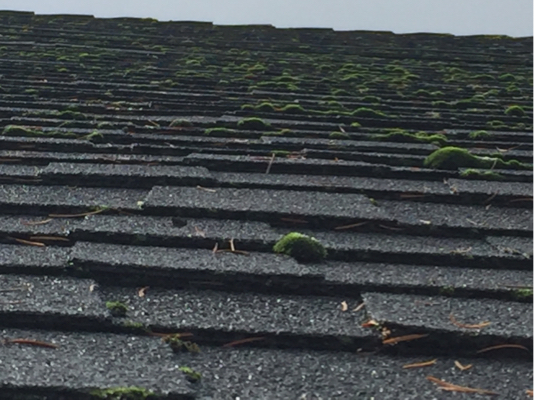
-
You see Missing Shingles or Missing granules
As your roof ages and inclement weather strikes, you may find a missing shingle or notice that the shingles are starting to look bald (granule loss). This loss could indicate that it’s time for a new roof. Granule loss occurs over time for many reasons, including the aforementioned weather, in addition to; foot traffic, rodents, or even tree limbs. It is possible to easily replace a few balding shingles. However, if the entire roof appears patchy, then it’s probably time to reroof.
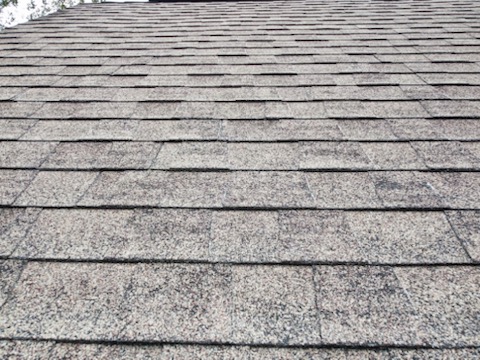
-
It’s Curling, Buckling, or Cupping
If you notice that the edges of your shingles are curling/buckling up and away from the roof or curling down into your roof (referred to as cupping), it’s an excellent indication that they are old and probably need to be replaced. It is noteworthy that if it’s only a few shingles curling upwards then, it may be possible to reseal them down.
The above is an extreme example of curling This image shows the edges of the shingles beginning to curl
-
It’s Discolored
Discoloration throughout your roof is an indication that it’s likely becoming dried out from the sun (shingles) or is rusting due to salt & water (metal). If you have a shingle roof that is discolored from the sun, it may lead to cracking. If your metal roof is discolored, have a professional ensure that the flashing or other metal components have not been compromised.
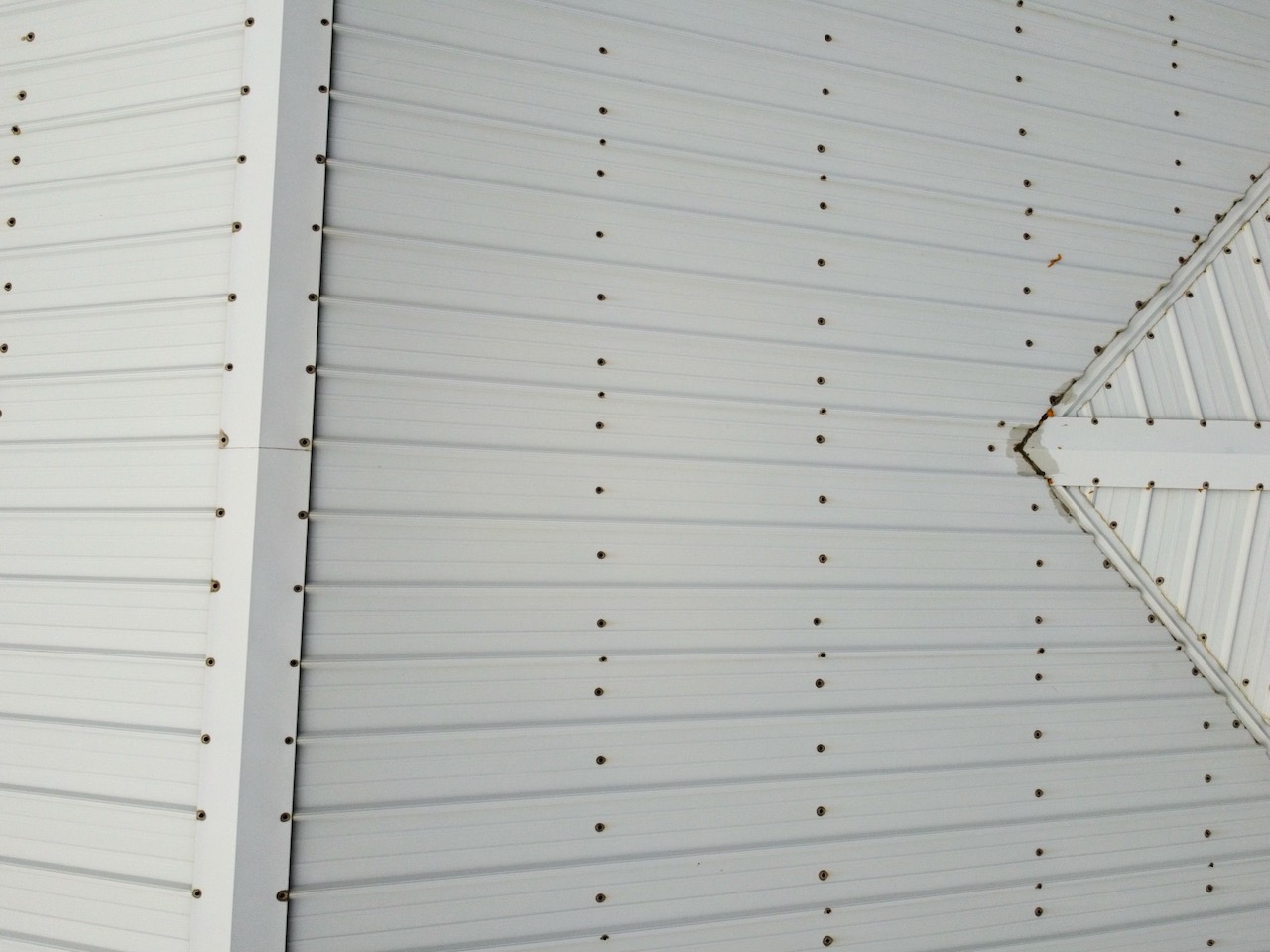
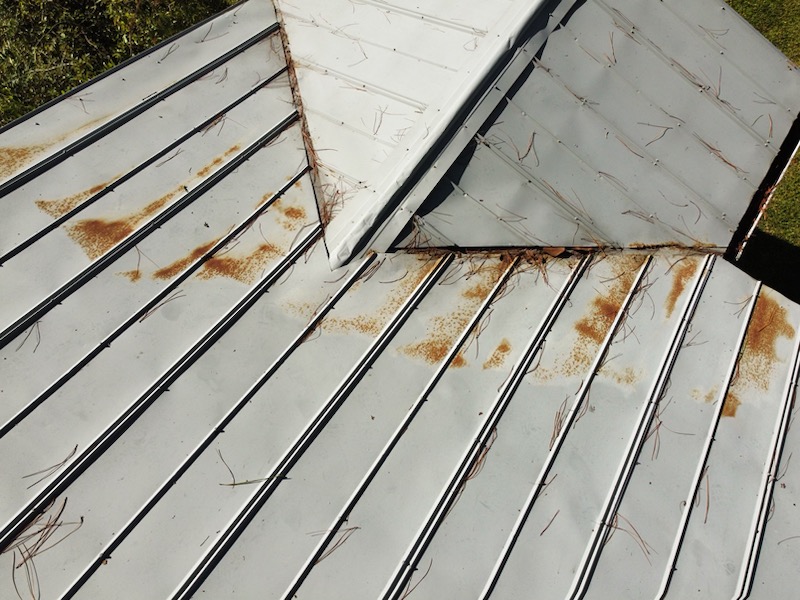
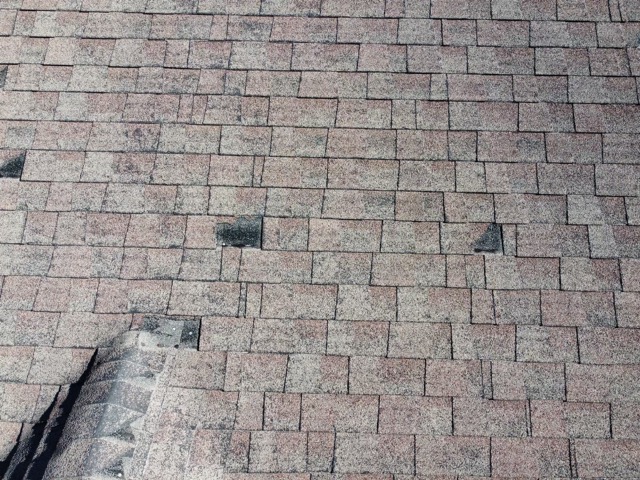
Discolored Fasteners on Metal Roof Rusting on Metal Roof Discolored Shingle Roof
-
Flaking
Should there be pieces missing from the granule coating or flaking on your roof, it is a sign that the protective layer is wearing out. You may notice the granules building up in your gutters. Flaking is indicative of heavy aging, and signals that the roof should quickly be replaced.
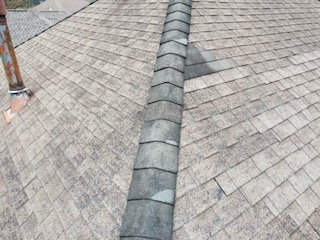
The granules of the shingles above have flaked & the roof appears discolored
-
Loosened or Missing Shingles/Tiles/Slates
If any of your roofing materials are shifting in the wind (loosening) or missing, chances are that there will be more loosening and disappearing soon, as wind or simply aging will add to this issue, accelerating the need for a new roof.
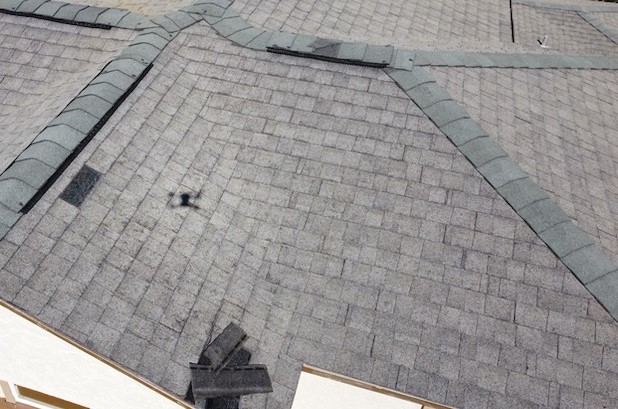
-
Blistering
When a roof blisters, the granule layer of the shingle, bubbles and often pops due to the rise in temperature of gases. This problem is typically due to a manufacturing issue or caused by improper installation. While blistering may not always cause damage, the shingles will need to be replaced, as raised blisters are more susceptible to weathering.
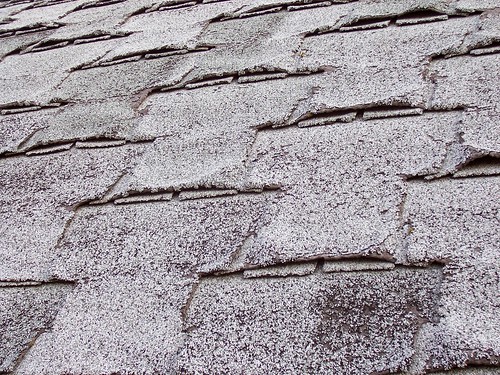
-
There are Holes in it
Whether they’re pinholes, e or unplanned skylights in your roof or roofing materials have holes in them, it’s a fairly certain sign that you need a repair or new roof. Holes in roofing materials lead to moisture in the underlayment which can cause damage to your home.

-
It’s Starting to Sag or bow
A sagging or bowing roof is a sure sign of an issue with your roof support structures (ex: trusses, joists, or decking) and it will need attention as soon as possible. Sagging indicates that water has penetrated the structure and rot may be present.


Typically you might need to stand back to see sagging but if you look to the center of these images you will see a dip in the decking
What to do if you think you may need to reroof?
Unless you ARE a professional contractor/ roofer, we suggest contacting an actual reputable, professional licensed roofer to properly assess your roof. If you notice any issue, take action immediately as the longer you wait, the larger the problem can grow. If you do find yourself needing to reroof, contact us to begin strengthening your homes’ first line of defense with a FORTIFIED™ roof. For more information about the FORTIFIED™ program, please visit: Homeowner Resources – FORTIFIED – A Program of IBHS (fortifiedhome.org).

